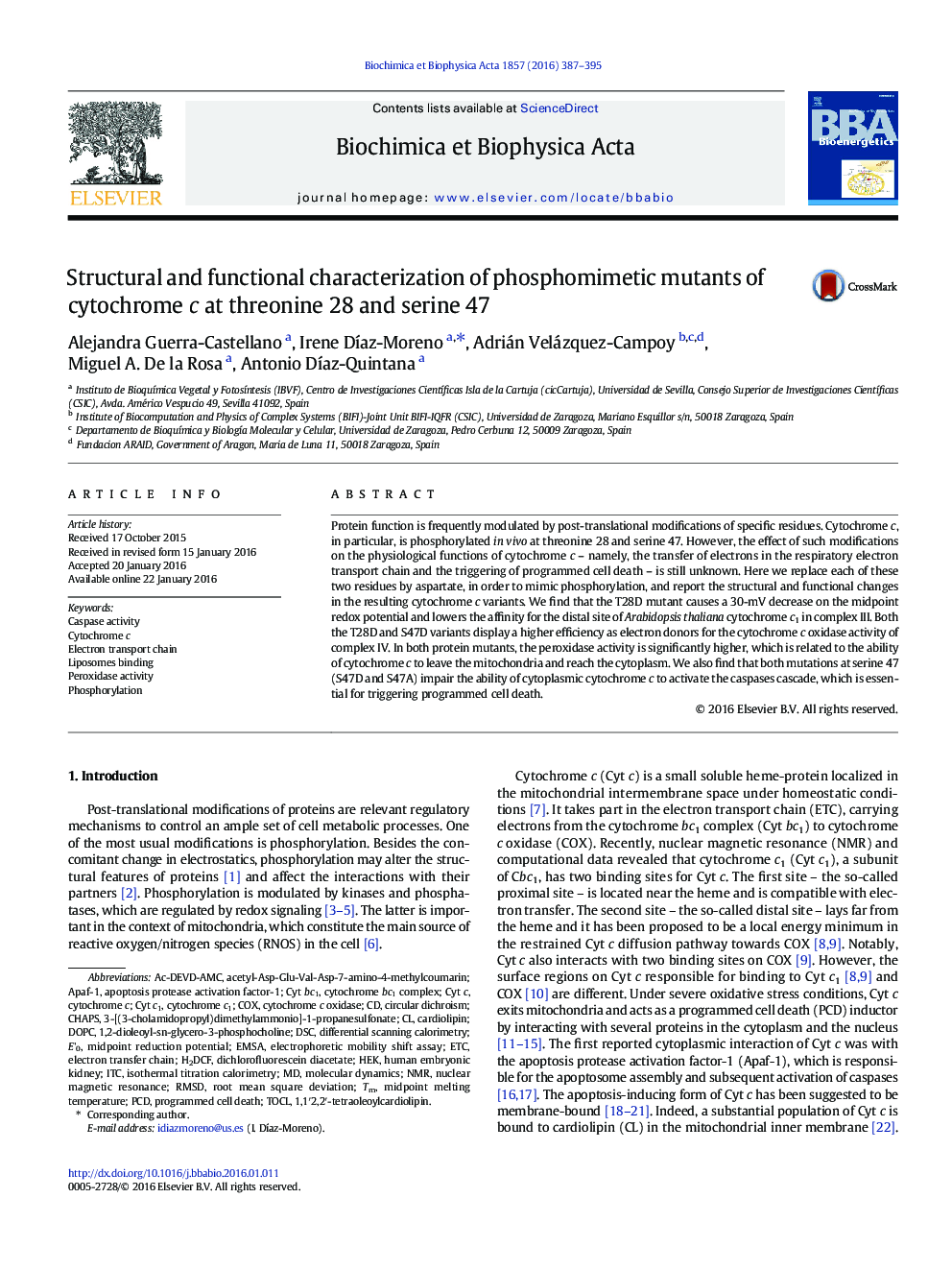| Article ID | Journal | Published Year | Pages | File Type |
|---|---|---|---|---|
| 1941954 | Biochimica et Biophysica Acta (BBA) - Bioenergetics | 2016 | 9 Pages |
•Cytochrome c docking on the distal site of cytochrome c1 is weaker in T28D mutant.•T28D and S47D mutants of cytochrome c increase the cytochrome c oxidase activity.•T28D and S47D mutants show changes in cardiolipin-affinity and peroxidase activity.•Residue 47 of cytochrome c is important for caspase activation during apoptosis.
Protein function is frequently modulated by post-translational modifications of specific residues. Cytochrome c, in particular, is phosphorylated in vivo at threonine 28 and serine 47. However, the effect of such modifications on the physiological functions of cytochrome c – namely, the transfer of electrons in the respiratory electron transport chain and the triggering of programmed cell death – is still unknown. Here we replace each of these two residues by aspartate, in order to mimic phosphorylation, and report the structural and functional changes in the resulting cytochrome c variants. We find that the T28D mutant causes a 30-mV decrease on the midpoint redox potential and lowers the affinity for the distal site of Arabidopsis thaliana cytochrome c1 in complex III. Both the T28D and S47D variants display a higher efficiency as electron donors for the cytochrome c oxidase activity of complex IV. In both protein mutants, the peroxidase activity is significantly higher, which is related to the ability of cytochrome c to leave the mitochondria and reach the cytoplasm. We also find that both mutations at serine 47 (S47D and S47A) impair the ability of cytoplasmic cytochrome c to activate the caspases cascade, which is essential for triggering programmed cell death.
